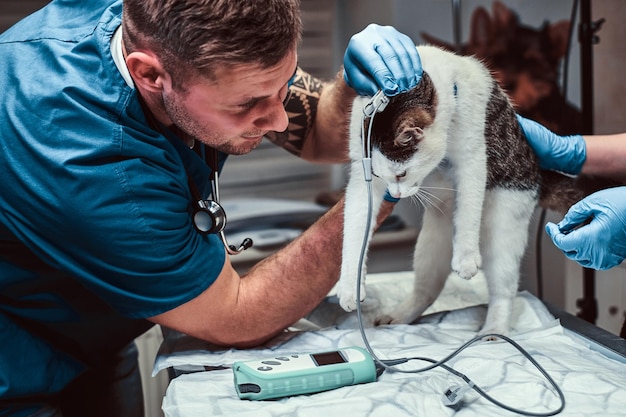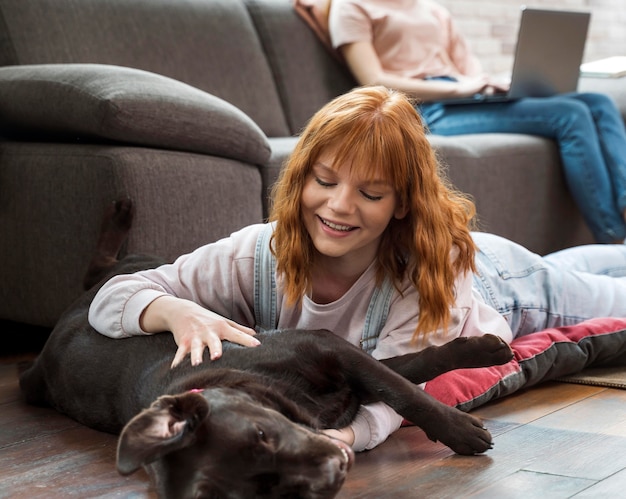How to Spot Heatstroke in Pets: Signs Every Owner Must Know


How to Spot Heatstroke in Pets: Signs Every Owner Must Know
Hot, humid August days in Orange Park can mean more than just sticky afternoons for people; they can also pose a serious health risk to your pets. As temperatures climb, heatstroke in pets becomes a genuine concern, especially for those who love spending time outdoors or even lounging in the sunniest spot indoors. At Sandy Paws Animal Hospital, located at 550 Wells Road, Suite 17, Orange Park, FL 32073, we believe every pet parent should know the signs of pet overheating and what steps to take if they suspect their furry friend is in trouble.
This guide will help you recognize the early symptoms of heatstroke in pets, understand the causes, and know exactly when it’s time to schedule an appointment with your veterinarian. Whether you’re searching for a vet near me for urgent advice or aiming to prevent emergencies before they start, our veterinary team is here to help you protect your pet’s health through every season. If you ever question whether your pet’s symptoms are serious, remember that our emergency veterinary care is available for Orange Park and surrounding communities.
Recognizing the Signs of Heatstroke in Pets
When hot weather arrives, pets can quickly become vulnerable to overheating, especially if they are left outside, exercise too vigorously, or have limited access to water and shade. Recognizing the signs of heatstroke in pets early can make all the difference in their recovery.
Key Symptoms of Heatstroke
Common signs of pet overheating include excessive panting, drooling, and restlessness. You might notice your pet seeking out cool surfaces, appearing lethargic, or showing a rapid heart rate. As the condition progresses, symptoms may also involve vomiting, diarrhea, and, in some cases, collapse or seizures. In cats, heatstroke may be less obvious; watch for open-mouth breathing, increased grooming as they attempt to cool down, or sudden weakness.
If your dog has a flat face (such as a Bulldog or Pug) or your cat is a Persian, be especially vigilant, as these breeds are more prone to overheating due to their anatomy. Puppies, senior pets, and animals with underlying health conditions are also at a higher risk. If you observe any of these warning signs, especially during periods of high heat or humidity, it is essential to act quickly and consult a veterinarian.
Subtle Clues That Shouldn’t Be Ignored
Sometimes, heatstroke in pets can begin with subtle behavioral changes. Your pet may seem unusually anxious, pace around the house, or refuse their favorite treats. Their gums might change color, becoming bright red or even pale. As the situation worsens, they could lose coordination or become unresponsive. Any combination of these symptoms is a clear signal that immediate veterinary attention is needed, as heatstroke can escalate rapidly and become life-threatening.
If you’re unsure about your pet’s symptoms or want a professional opinion, a comprehensive pet exam can help ensure your pet’s health is thoroughly assessed, especially during the hottest months in Orange Park.
Why Heatstroke Happens: Understanding Pet Overheating
Heatstroke in pets is a form of hyperthermia, meaning the body temperature rises above a safe level and the animal can no longer regulate it efficiently. In Orange Park, heat and humidity can quickly overwhelm your pet’s natural cooling mechanisms, especially since dogs and cats don’t sweat the way humans do.
How Pets Regulate Temperature
Pets primarily cool themselves through panting and, in dogs, limited sweating through their paw pads. On humid days, panting is less effective, and the risk of heatstroke in pets increases. Additionally, pets with thick or dark coats, overweight animals, and those with respiratory or heart conditions are at a higher risk.
Common Triggers for Heatstroke
Typical scenarios leading to signs of pet overheating involve leaving pets in parked cars, even for a few minutes, outdoor play without shade, intense exercise during the hottest times of day, or confinement in poorly ventilated spaces. Even indoor pets can be affected if the air conditioning fails or they cannot access cooler areas. In Orange Park and surrounding communities, summer storms can cause sudden power outages, unexpectedly raising indoor temperatures.
Understanding these triggers helps pet owners remain vigilant and proactive in preventing dangerous situations.
Treatment and Recovery for Pets Experiencing Heatstroke
Recognizing the early signs of heatstroke in pets is only the first step; prompt, professional treatment is essential for a full recovery. At Sandy Paws Animal Hospital, our veterinary professionals are trained to manage heat-related emergencies with compassion and expertise.
Immediate First Aid Steps
If you suspect your pet is suffering from heatstroke, move them to a cooler environment right away. Offer small amounts of cool (not cold) water, and use damp towels to gently cool their body, focusing on the neck, armpits, and groin. Avoid ice or very cold water, as this can cause shock. While these measures may help stabilize your pet temporarily, they are not a substitute for veterinary care.
Professional Veterinary Care in Orange Park
Once at our hospital, a veterinarian will assess your pet’s condition and begin supportive treatment. This often includes intravenous fluids to rehydrate and lower body temperature, oxygen therapy, and careful monitoring of organ function. In some cases, additional diagnostics such as blood work or advanced imaging may be necessary to evaluate the extent of any internal damage. Our veterinary team may also provide medications to manage complications, such as seizures or swelling.
If your pet’s heatstroke is severe, they may require hospitalization for continued observation and therapy. The sooner treatment begins, the better the prognosis for your pet’s recovery. Our comprehensive veterinary services in Orange Park are designed to address both immediate emergencies and long-term health needs following heat-related incidents.
Preventing Heatstroke: Practical Tips for Pet Owners
Prevention is always preferable to treatment, especially with a condition as dangerous as heatstroke in pets. Taking simple precautions can help keep your furry family member safe during Orange Park’s hottest months.
Creating a Safe Environment
Key prevention strategies include ensuring your pet always has access to fresh, cool water and shaded areas, especially if they spend time outdoors. On particularly hot days, adjust exercise routines to early morning or late evening, when temperatures are lower. Never leave your pet in a parked car, even with the windows cracked, as temperatures rise to deadly levels within minutes. Indoors, be mindful of power outages and check that air conditioning or fans are functioning properly.
For pets with thick coats, regular grooming can help reduce the risk of overheating. If your pet has a chronic health condition, ask your veterinarian for tailored advice on managing heat risk. Our veterinary team is happy to discuss preventive care programs designed specifically for your pet’s needs, supporting your efforts to keep them comfortable and healthy all summer long.
Monitoring High-Risk Pets
If you have a brachycephalic (flat-faced) breed, a senior pet, or an animal with heart or lung issues, extra vigilance is required. Monitor for any signs of pet overheating, and never hesitate to reach out to a veterinarian for guidance. Scheduling a wellness examination during the summer months is an excellent way to address any underlying concerns and receive personalized tips for your pet’s safety.
When to Seek Veterinary Care for Heatstroke in Pets
Knowing when to seek professional help is critical. If your pet displays any signs of heatstroke, such as rapid panting, vomiting, confusion, or collapse, immediate veterinary attention is necessary. Time is of the essence; delaying care can result in organ failure or even death.
Deciding When Emergency Care is Needed
Even if symptoms seem mild, such as slight disorientation or excessive drooling, it is always safer to err on the side of caution. Our veterinary professionals can evaluate your pet and provide necessary interventions before the situation becomes critical. In cases where your pet is unresponsive, having seizures, or unable to stand, seek emergency veterinary care immediately. For Orange Park and surrounding communities, having a trusted vet near me for urgent care needs can make all the difference.
If you are ever unsure, contact Sandy Paws Animal Hospital directly. Our team can advise you on next steps and help arrange for prompt evaluation and treatment. Remember, early intervention saves lives, and we are committed to being your partner in pet health, year-round.
Protect Your Pet: Partner with Sandy Paws Animal Hospital
Heatstroke in pets is a preventable emergency, but it requires vigilance and a proactive approach from every pet owner. By understanding the signs of pet overheating, taking steps to prevent dangerous situations, and knowing when to seek help, you can ensure your furry companion stays safe even during Orange Park’s hottest days.
If you have concerns or questions about your pet’s risk, we encourage you to schedule an appointment with our veterinary team. Sandy Paws Animal Hospital offers comprehensive veterinary services in Orange Park, including wellness examinations and emergency care for heat-related illnesses. Our experienced veterinarians are dedicated to providing the highest standard of care in a warm, fear-free environment.
Whether you are preparing for summer or responding to a heat-related emergency, remember we are your local resource for quality veterinary services near me. Don’t wait until a crisis strikes; call us today at (904) 278-0600 or visit our Orange Park location to give your pet the care and protection they deserve.
The information in this blog is intended for educational purposes only and should not replace professional veterinary advice. If you believe your pet is experiencing a medical emergency, contact your veterinarian immediately.



















